#Walldienerhaus
Photo










Rostock (No. 1)
Rostock, officially the Hanseatic City of Rostock (German: Hansestadt Rostock), is the largest city in the German federal state of Mecklenburg-Western Pomerania and lies in the Mecklenburgian part of the state, close to the border with Pomerania. With around 208,000 inhabitants, it is the third largest city on the German Baltic coast after Kiel and Lübeck, the eighth largest city in the area of former East Germany, as well as the 39th largest city of Germany. Rostock was the largest coastal and most important port city in East Germany.
Rostock stands on the estuary of the River Warnow into the Bay of Mecklenburg of the Baltic Sea. The city stretches for about 16 km (10 mi) along the river, that flows into the sea in the very north of the city, between the boroughs of Warnemünde and Hohe Düne. The city center lies further upstream, in the very south of the city. While most of Rostock's inhabitants live on the western side of the Warnow, the area east of the river is dominated by the port, industrial estates and the forested Rostock Heath. The city's coastline east and west of the river mouth is relatively undeveloped, with long sandy beaches prevailing. The name of the city and of the river are of Slavic origin.
Rostock is the economic center of Mecklenburg-Western Pomerania and the state's only regiopolis. The port of Rostock is the fourth largest port in Germany after the North Sea ports of Hamburg, Bremen/Bremerhaven and Wilhelmshaven, and the largest port on the German Baltic coast. The ferry routes between Rostock and Gedser in Denmark as well as Trelleborg in Southern Sweden are among the busiest between Germany and Scandinavia. Rostock–Laage Airport lies in a rural region southeast of the city.
The city is home to the oldest university in the Baltic region and one of the oldest universities in the world, the University of Rostock, founded in 1419. The university's hospital, Universitätsmedizin Rostock, is one of two university hospitals in the state, along with Universitätsmedizin Greifswald of the University of Greifswald in Western Pomerania.
Source: Wikipedia
#An der Hege 11#oldest standing structure#Hansestadt Rostock#Germany#Hanseatic City of Rostock#Deutschland#summer 2020#travel#vacation#cityscape#architecture#tourist attraction#Europe#landmark#Mecklenburg-Vorpommern#Mecklenburg-Western Pomerania#Walldienerhaus#exterior#façade#Am Ziegenmarkt 4#Saint George#sculpture#original photography
11 notes
·
View notes
Photo
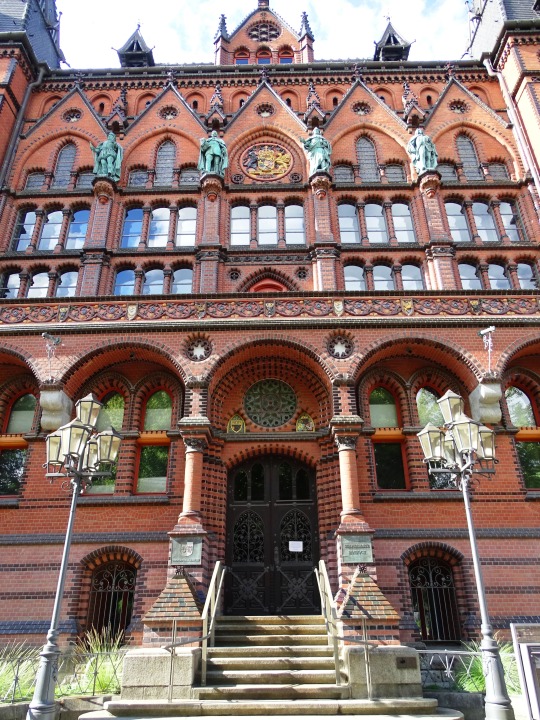

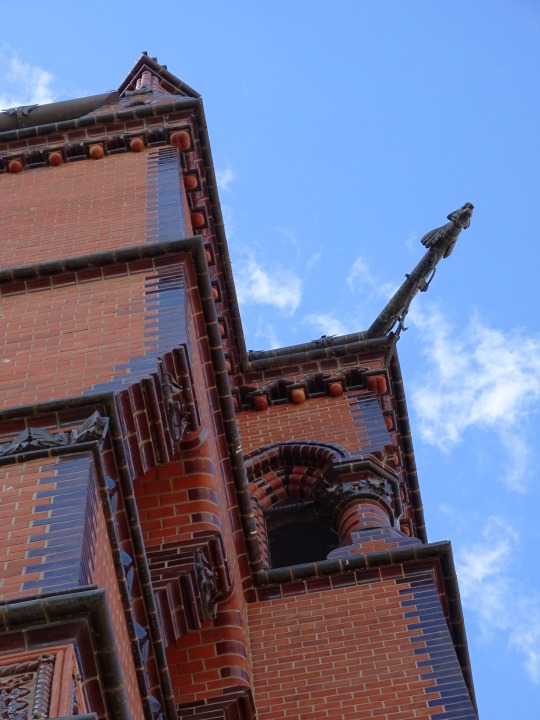
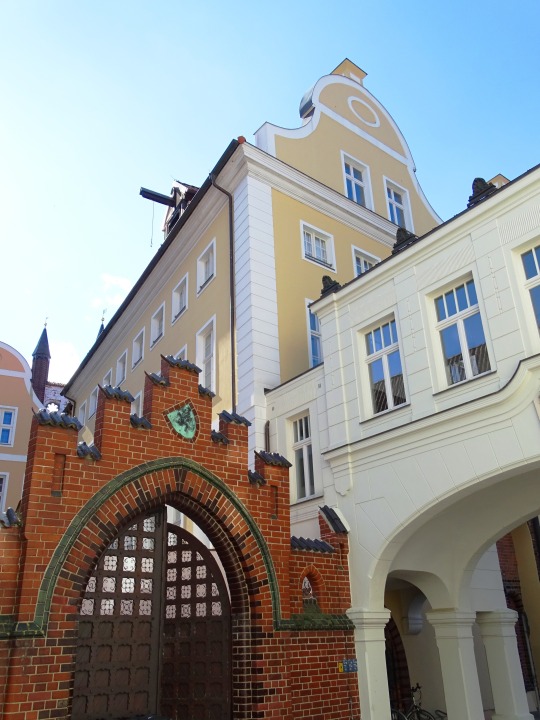
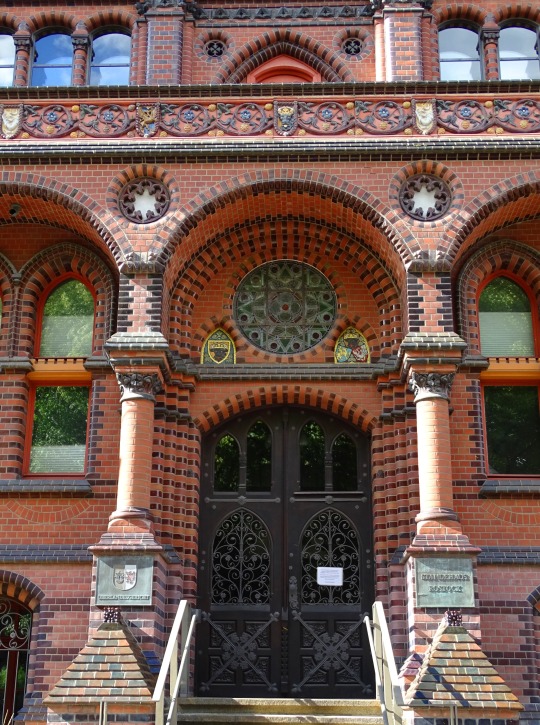
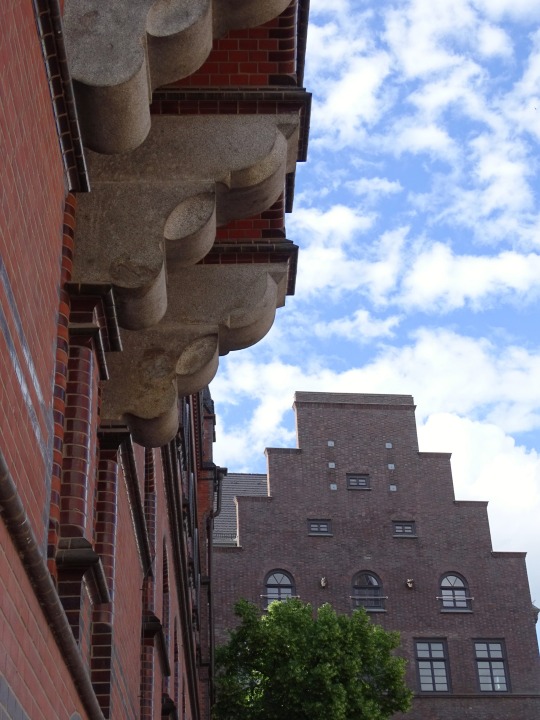
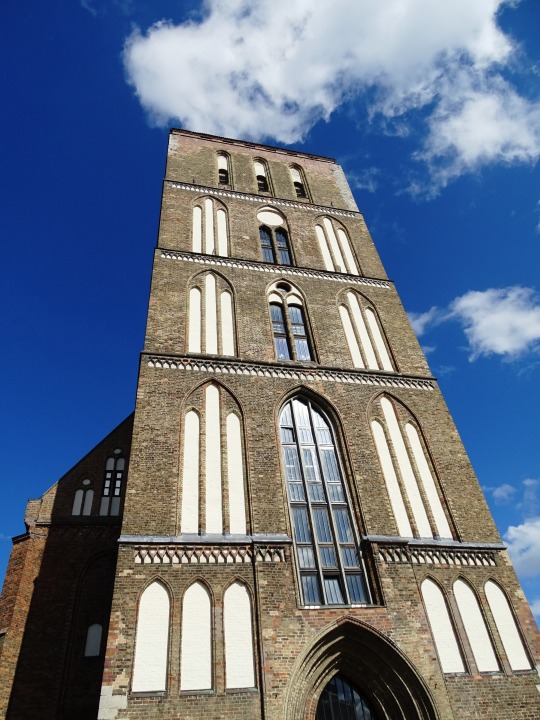



Ständehaus Rostock and other Buildings (No. 2)
In the 20th century, important aircraft manufacturing facilities were situated in the city, such as the Arado Flugzeugwerke in Warnemünde and the Heinkel Works with facilities at various places, including their secondary Heinkel-Süd facility in Schwechat, Austria, as the original Heinkel firm's Rostock facilities had been renamed Heinkel-Nord. The world's first airworthy jet plane prototype made its test flights at their facilities in what used to be named the Rostock-Marienehe [de] neighborhood (today's Rostock-Schmarl community, along the west bank of the Unterwarnow estuary).
In the early 1930s, the Nazi Party began to gain among Rostock's voters, many of whom had suffered economic hardship during the 1920s. In elections in the summer 1932, when the Nazis achieved 37.3 percent, their greatest national showing in a free election, they polled 40.3 percent in Rostock. A year later, after the Nazi seizure of power and the suppression of other political parties, the Rostock city council (Stadtrat) was composed entirely of Nazis. During Kristallnacht on 10 November 1938, the synagogue in Rostock's Augustenstrasse was destroyed by arson and dozens of Jews were beaten and imprisoned.
Feverish rearmament by the Nazi regime boosted Rostock's industrial importance in the late 1930s, and employment soared at the Heinkel and Arado factories, and at the Neptunwerft shipyard. The city's population grew from 100,000 in 1935 to 121,192 in 1939.
During World War II, Rostock was subjected to repeated and increasingly heavy bombing attacks, especially by the British Royal Air Force. Targets included the Heinkel and Arado plants and the shipyard, but churches and other historic structures in the city centre were also heavily damaged, among them the 14th-century Nikolaikirche (St Nicholas Church) and Jakobikirche (St Jacob's Church). The ruins of the latter were torn down in 1960.
The city was eventually captured by the Soviet 2nd Belorussian Front on 2 May 1945 during the Stettin-Rostock offensive operation.
After the war, Rostock – now in the German Democratic Republic – became East Germany's largest seaport. The state expanded the national shipyards in the district of Warnemünde. The city's population, boosted in part by resettled ethnic German refugees who had been expelled from territories in the east, increased in the GDR years to a peak of 260,000. Following the reunification of Germany in 1990, Rostock lost its privileged position as the No. 1 port of the GDR, and the city's population declined to about 200,000. However, after 2006, the population increased again. Today, Rostock and Warnemünde are significant tourist destinations on the Baltic Sea.
Since the late 20th century, migrants have come to Germany from Turkey and Africa seeking work. In response to high rates of joblessness and increased levels of crime, some Germans took part in the Rostock-Lichtenhagen riots which occurred from 22 to 24 August 1992 in protest.
Source: Wikipedia
#Kerkhoffhaus#Ständehaus Rostock#city hall#town hall#Rathaus#Stadthaus#Hanseatic City of Rostock#Hansestadt Rostock#Germany#travel#summer 2020#architecture#original photography#Deutschland#landmark#Mecklenburg-Vorpommern#Mecklenburg-Western Pomerania#Walldienerhaus#Nikolaikirche#Steintor#façade#cityscape
4 notes
·
View notes